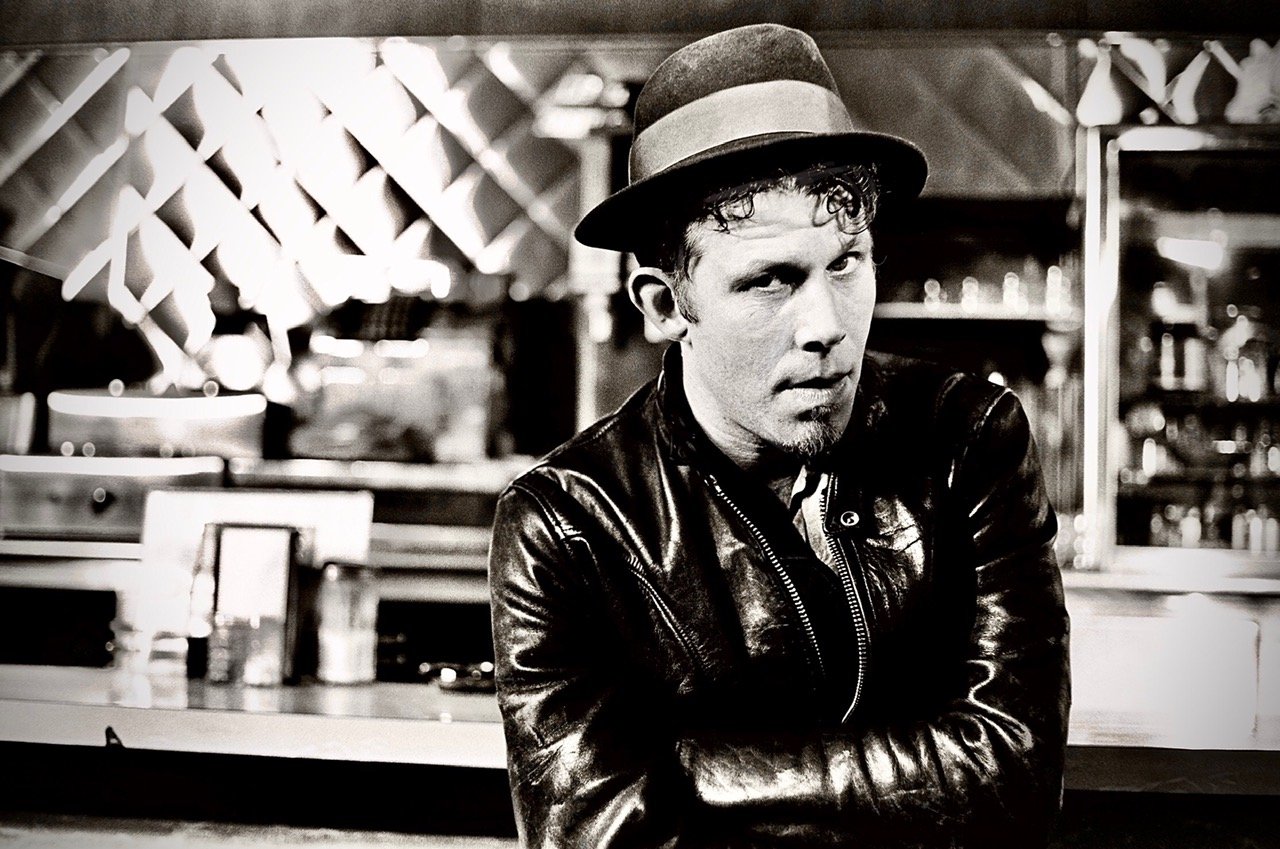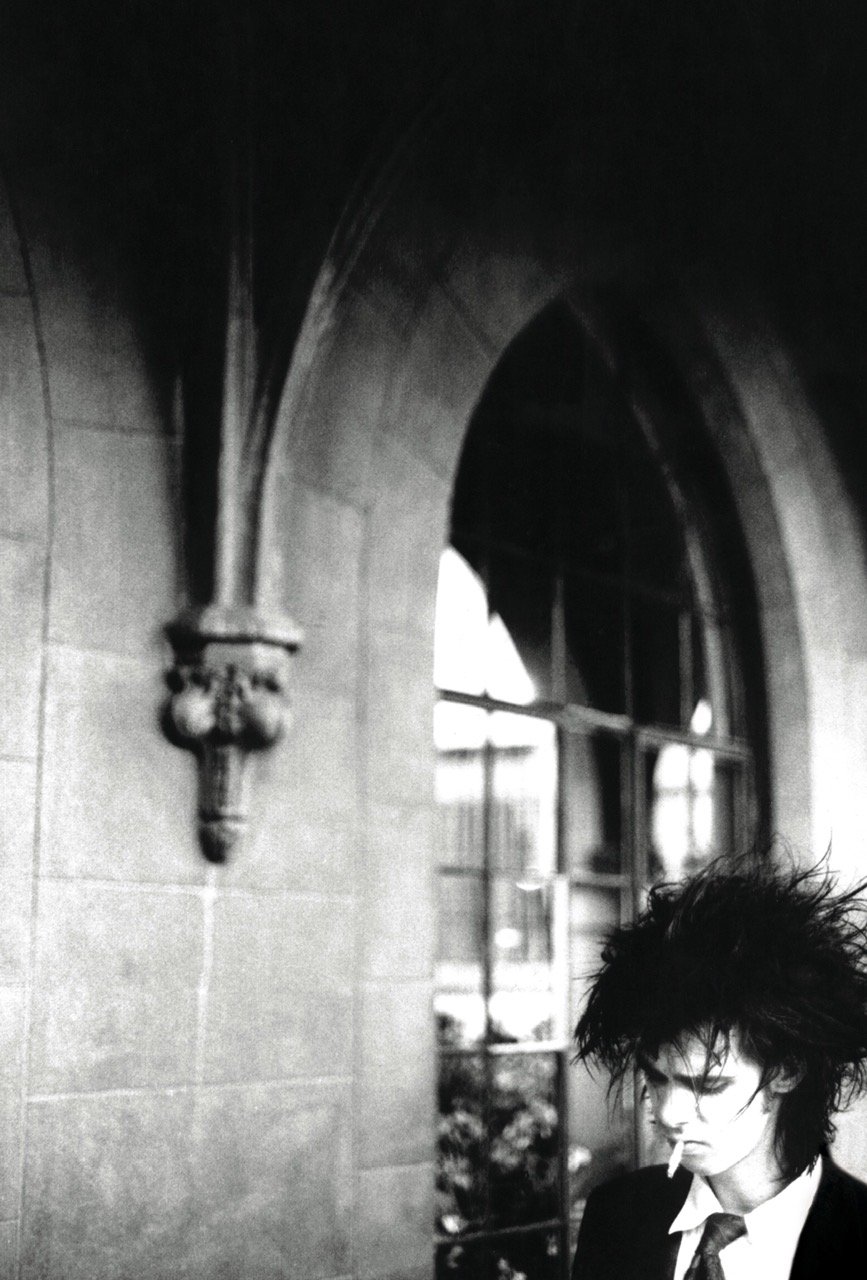Edward Colver: Punk’s Most Beloved Photographer
All Photos Shot By And Courtesy Of Edward Colver
In the early 80’s, when American Hardcore Punk began to take off in Southern California, photographer Edward Colver was attending live performances five nights a week while documenting the most iconic bands from the movement.
He shot Henry Rollin’s putting his first through a mirror on the cover of Black Flag’s 1981 LP Damaged. He documented the pandemonium of the infamous riots outside of Black Flag’s/D.O.A concert at The Whiskey in 1980. Colver was not a distant observer but intimately involved in the movement, amongst the delinquents and fallen angels in the pit, capturing the rage, freedom and visceral emotion Hardcore Punk came to embody and perform.
The movement resonated with an American public frustrated at the failed promises of the hippie generation and politically discontented with the election of President Ronald Reagan. Musicians were fed up with music that sounded derivative and didn’t speak to their experience. Frontmen like Henry Rollins of Black Flag and H.R. of Bad Brains would channel a seething anger into their physical bodies while they performed, contorting and convulsing in complete physical abandon on stage. Their destructive and violent behaviour mirrored the fast-paced volatility of the music.
Colver had a front-row seat to document the mayhem. He photographed his first album cover in 1980, a crowd shot taken in the bowl of Marina Del Rey Skatepark that the Circle Jerks used for their debut LP Group Sex. He went on to shoot covers for Black Flag, Adolescents, Bad Religion, Ice Cube, and countless others. His photographs have been featured on over five hundred album covers.
The Man Himself.
Can you talk a little about your upbringing and what type of music you listened to as a teen?
When I was a teenager in the 60’s I liked heavy underground psychedelic music. That's what I grew up listening to, not pop psychedelic. The Elevators and Blue Chair and the 13th Floor Elevators. Iggy Pop. People talk about who started punk. It was Iggy. People talk about the Ramones and the Sex Pistols, and it's like, Iggy did it before you and he did it better. The Ramones are a just a pop band. They’re not punk.
Do you remember when you first encountered the Hardcore Punk scene?
I was in Chinatown and then soon afterwards the Hong Kong Cafe opened. I just lived in that place. I started going in late ‘78 before it took off.
Do you have any stories of the first Hardcore gig you went to where you thought, this is serious and intense and going to be remembered forever?
I never would have thought any of it would have been remembered. The fact that it became such a big part of music history just blows my mind because nobody liked it. Nobody cared about it. They hated us. They hate it. It was a kind of a big underground scene for a while. I was out like five nights a week photographing shows.
Why do you think Hardcore Punk caught on and why did it resonate with people in California in the early 80’s?
It was just a lot of disaffected suburban youth. They're all just kind of lost and not happy and kind of coalesced around that. I was older than everybody in the scene, I was twenty nine in 1978. I like to think I look better. I see some of my old punk friends and I am like wow, what happened to you?
Henry Rollins and H.R. from the Bad Brains must have trusted you to give you the kind of access for the photographs you shot. How did you gain their trust?
I knew them all and I was at all there shows. So even if they didn’t know me, they didn’t mess with me.
I shot all my live stuff with a 50-millimeter lens. I was like two or three feet away from these people. I never used a telephoto lens. I didn't have an auto focus. I was close up and the pictures are sharp. A 50-millimeter lens is akin to human vision. It doesn't distort. None of that. I just used 50mm and that's what gives my photos the immediacy.
The composition for the photograph of the Dead Kennedy’s performing at The Whiskey is insane.
Jello has got his hand out and, like, shaking it over these kids. It looks like he's a puppet master. Very cool. Great performer.
Do you have any favourite images? I know that the photograph of Chuck Burke stage diving during an Adolescent’s show has become symbolic of that era. Is that a favourite of yours?
That’s one of them. It's pretty interesting actually. Levis and Vans all licensed that and it was weird because that picture was quite iconic and known worldwide to a lot of people. It took Levis and Vans thirty eight years to realize this. Like, there's my product placement right there in this photo. This kind of cracked me up thirty eight years after the fact.
What about Bad Religion throwing a brick through a car window?
We found an abandoned car and I was like, OK, 1-2-3 and snap. I grew up a total art nut. All I ever cared about was art. I did woodworking and ceramics and print making and sculpting. Because of that, I understand composition and timing and lighting that most photographers don’t learn. I had ideas to set up conceptual stuff and create a picture, instead of just snapping it.
How did you develop your style of photography?
Live punk photography is so trendy right now. It blows my mind. Everybody and their dog wants to shoot live photos and their just kind of pointing and shooting. Pray and spray. Paying attention to what you're doing is important. Even if I was getting knocked sideways, I'm trying to compose the picture, not take one. I shot either one person in the band or everyone, not half the band. That’s worthless.
Some of your most iconic images have been of police activity. I am referring to the photos you took of the Black Flag/D.O.A riot. Did you feel the hardcore scene was targeted by police in some way?
Yes, absolutely. Specifically Black Flag because of Raymond Pettibon. They did some anti cop stuff. Raymond did a drawing with a gun in a cop’s mouth and it says “make me cum.” There’s another one where a cop is sitting down in his car and he has got a rope, a gun, and a lollipop on the seat next to him as he’s pulling a kid over. That stuff didn’t fly with them. But I avoided getting arrested. I was on the peripheral getting my photographs.
It’s crazy to think nowadays, but you were one of the only people capturing these moments at the show. What kept you going back?
I was on the scene for a solid five years. I had done eighty Punk record covers before the end of 1983. A band called Peace Corpse did a song and there was a lyric, something like “Jump off the stage, you might get your picture taken by Ed Colver.” I've lost track of the bands I shot. I know I've worked on over five hundred records.
What happened after 1984, when the Hardcore Scene started to fizzle out?
I started doing photography and location photography that record companies that actually paid me for. I photographed recording studios and postproduction facilities. Oh, I should mention. I've never had a published phone number. I've never asked for work. I've never ran an ad. And I use funeral sympathy cards with my information on it for business cards.
You also shot Alice Cooper, Anthony Kiedis, and Ice Cube. What was that like?
I shot Ice Cube right after N.W.A broke up. I took a photo of him sitting there with his intense eyes. When the suits left the meeting, I told him to put his chin down so he looked aggressive and shot ten frames and it was done. The suits walked in and said what are you doing? I wasn’t supposed to be shooting him. A friend called and wanted to use just his eyes for a billboard. It ended up being the photograph for his greatest hits album.
Do you still work on ceramics or sculptures?
I haven't done ceramics in years. I do a lot of social political sculptures using bound antique objects and juxtaposing them together. But the political atmosphere in America right now is so insane. The crap that's going on is terrifying. One of my friends was going to use my artwork and I asked them to take it down. These idiots with room temperature IQ’s. Beer fueled morons with guns. I don’t want them knowing who the hell I am. It’s creepy as fuck to feel that way in your own country.









